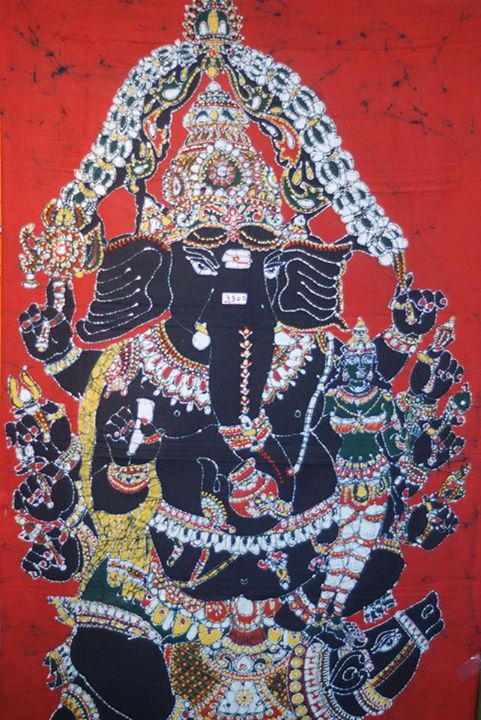This Japanese art has spread far and wide so subtly that it has mixed with the indigenous cultures of the lands it migrated to. The entire Indian sub-continent, China, Indonesia, Nigeria and many other countries have adopted this art of colouring the cloth. The workmanship of each differs in the way the pattern is laid, but still there are many parallels and similarities that exist. Each one is beautiful in its own way, and each one is worn by inhabitants of the global village.
Wax is among those diverse raw materials that have use in almost all art forms, be it the Bronze sculptures, paintings, batik etc. Batik employs the technique popularly known as wax-resist dying wherein the dye is resisted to reach the entire fabric by putting wax as a hindrance in the path of the dye. Batik in today’s time uses several motifs that are specific to the regions where the design is being made. The cloth after being decorated with the wax, immersed in a colour bath. The wax resists the dye, while the wax-free cloth surfaces get dyed. The wax is later removed with boiling water.
The Indian Batik Print has also left its influence on different regions of the world. In 17th century, one of the Malaysian Kings even imported over 100 pieces of the Indian Batik Cloth; owing to a sea mishap only 4 could reach his court. It is considered to be as old as 2000 years and is seen in all Indian markets. Even in India the patterns are the feature of the region of produce. Rajasthani Batik shall differ from Gujrati which may in turn differ from a Batik piece dyed in South India. Not only are these prints used for dressing purposes but are increasingly being used to decorate walls and homes. They are used for designing table mats, tea coasters, curtains, bed-sheets, ladies purses, shoes and almost every other item that has some use of cloth.
Many Indian schools for the differently-able coach the trainees in this art as a part of the vocational training that is imparted to them so that they can earn a livelihood for themselves. The Indian motifs range from flowers to animal prints; elephants and peacocks top the list. Human figures amidst greenery are also beautifully depicted in this art form. The modern batik prints are more abstract and may also have alphabets and religious verses or emblems on them.
India has such a vast culture and artisan population that whatever it imbibes into its heritage becomes an intricate part and it becomes impossible to judge whether it is a borrowed form of art or a native variety that originated and adapted itself on this pious land.







